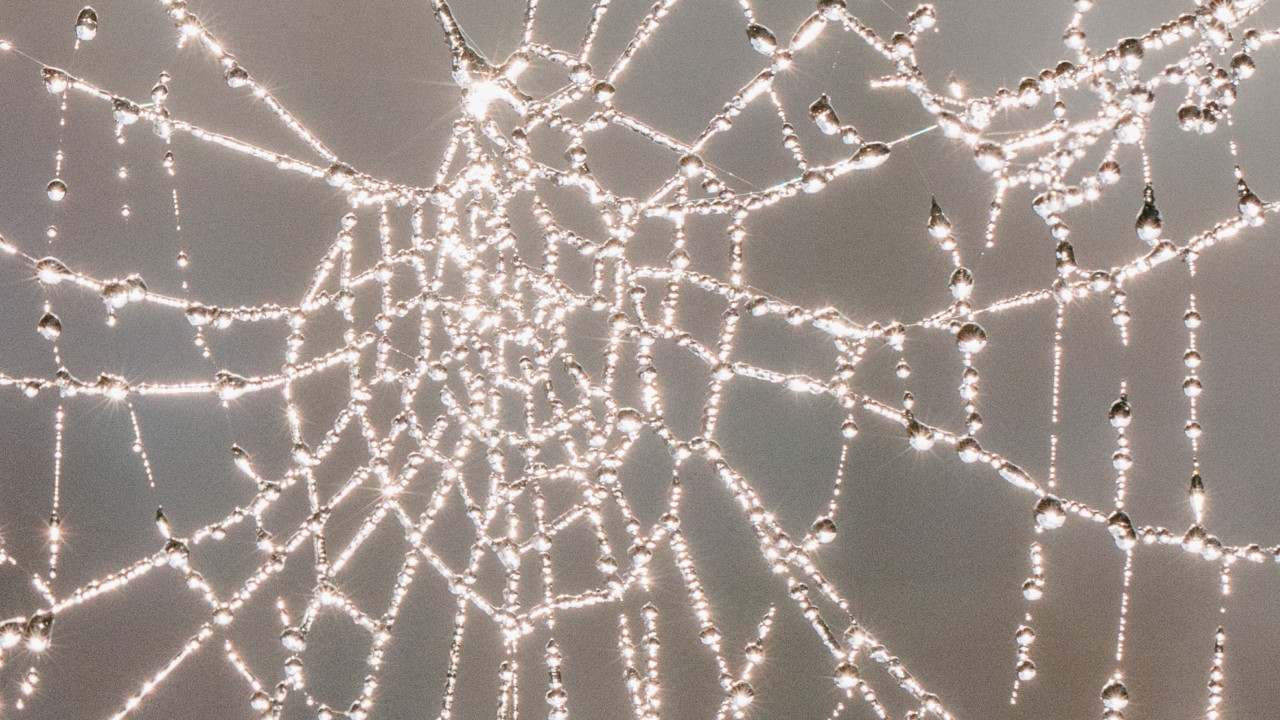

Photograph by Tobias Nicolai / Connected Archives
words by willow defebaugh
“Spiderwebs are images of the nonlinear, of the many directions in which something might go, the many sources for it.”
—Rebecca Solnit
Crawling on almost every continent on Earth, nature has spawned over 50,000 species of spiders. Nearly as ubiquitous are our cultural mythologies around these creatures, many of which are tied to creation. Arachnids are, after all, the great designers and architects of the animal kingdom—sewers of some of nature’s most vital teachings. In every strand a spider spins is a thread of wisdom for what it takes to weave a new world.
The first thread is versatility. Created by special organs called spinnerets, spider silk is one of nature’s most dynamic inventions. It’s lightweight, flexible, stronger than steel, and tougher than Kevlar armor. Humans have been trying to replicate this wonder material for decades—and recently, we’ve succeeded. Biotech companies are now using synthetic spider silk that mirrors its natural properties for everything from textiles and leather alternatives to medical biomaterials.
One can’t weave without proper structure. Depending on the species, spiders weave webs in a diverse array of forms and functions. Those of the family Araneidae (also known as orb weavers) weave circular webs. They begin by pulling out a single thread with one leg, and then use another to weave multiple threads into a balloon-like structure that they cast into the sky. They trust the wind and wait for a breeze to land the line as an anchor. Once they sense that it has landed, they follow the thread, leaving new silk behind to fortify it. They repeat this about 20 times, then decide which seven to keep, and then cut the rest. From there, they weave in circles to the center.
Of course, originality is also key. Many other forms of creative architects exist among arachnids. Tangle-web spiders of the Theridiidae family (which includes the black widow) design three-dimensional structures commonly known as cobwebs that confuse their victims. Triangle weavers create triangular webs with an anchor line that they pull taut and then use to fling themselves at their victims when the time is right, while ogre-faced spiders make small nets that they strategically drop on prey from above. Perhaps most impressive is the diving bell spider, which lives entirely underwater—using its signature webs to store air bubbles from the surface.
Whether in the careful crafting of their intricate webs or in the waiting for prey, another common creative thread exists among spiders: patience. Spiders know that the key to accomplishing anything isn’t tools, it’s time. Spider silk may be miraculous, but it’s still no match for the many obstacles that nature has in store; spiders are constantly repairing their work or building anew, sometimes spinning fresh webs every day. They also do so sustainably, known to eat previous webs to restore their silk supplies.
It can be tempting to see setbacks as failures. But from spiders we can also glean the value of stress and more importantly tension. Creativity requires it; in fact, a strong web can’t be woven without it. This tension not only allows for a stronger structure, it’s also a tool that spiders can use vibrationally to sense danger and capture prey. Their very survival depends on it. Whether in creative collaboration or the creativity that encountering obstacles engenders, conflict can be generative, prompting us to spin new solutions. Tension can feed us, too, if we let it.
I don’t know what unique and individual webs you are weaving in your life. What I do know is that they will require patience and endurance. I know that you will need to cast your nets into the wind, to trust the forces of our world, even when they break you down. I know that you will need to weave and reweave many times, that you already have. I know that you will need to follow the threads, that tension will be involved. I also know that this is all true for what we are weaving together, the story we are spinning. The one about how humanity relearned its place in the web.
Editor’s Note: This newsletter was originally published in 2021. The version below was edited and adapted for The Overview book.
The Sagacity of Spiders and the Webs They Weave